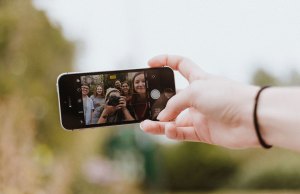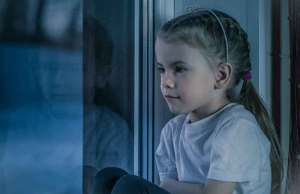
- Social media is often frowned upon for its harmful impact on teens—but the truth is that there are both pros and cons to their social media use.
- One pro is that social media encourages friendship and interpersonal connection: It helps teens fulfill their social needs.
- Also, it helps kids learn about other places and cultures they wouldn’t otherwise experience; in this sense, it serves as an educational tool.
- Still, we cannot ignore the negative effects of social media use: It can lead to anxiety, provide a breeding ground for bullying, and influence bad behavior.
- So, is it a problem? If teens only experience positive feelings after spending time on Instagram or Snapchat, then their social media use likely isn’t an issue.
- On the other hand, if they feel anxious or depressed and spend an ample amount of time engaging on social media, their habits could likely use an intervention.
Many of us have a love-hate relationship with social media: We’ve got accounts on every platform there is, but we debate whether using these accounts is good or bad for our health. Some decide they’re better off without social media; some cut back and find a sweet spot; and others decide that social media just isn’t for them.
That said, there is a specific demographic that we’re all particularly concerned about when it comes to social media use: teenagers. These individuals have grown up in the digital age, and they are prominent on all of the social platforms. This begs the question: Is social media good or bad for teens? As with most things, there are both pros and cons of social media use among teens, of which we will explore below.

The Pros of Social Media: A Social and Educational Tool
While social media often gets a bad rap, it isn’t all bad. Kids utilize different social media platforms like Instagram, TikTok, and Snapchat for good, too! “One of the pros of social media is that it encourages friendships,” explains Emily Mendez, mental health writer and expert. “Also, social media helps kids learn about other cultures and places all over the world.”
First, social media was designed to connect. It offers kids and teens another opportunity for connecting with their friends and therefore for fulfilling their social needs. Secondly, it serves as an educational tool. Think about it: There are hundreds if not thousands of Instagram accounts dedicated to showcasing the beauties of the world. If other kids and teens today are anything like my little brother, these accounts fill their feeds.
Additionally, social media serves as a form of creative expression. When I was a teen, Myspace was all the rage. My friends and I would spend hours editing our profiles—changing our layouts, our backgrounds, our profile pictures, our bios—which channeled our creative juices and even taught us how to code websites in the process. Today, Myspace isn’t so popular, as it’s been pushed out of the spotlight by platforms like Instagram, TikTok, and Snapchat. But still, today’s teens use these social media platforms to express themselves and put their personalities on display.
The Cons of Social Media: Bullying, FOMO, and Mental Health Issues
All of that said, social media can be dangerous for teens too. It can lead to anxiety, assist in cyberbullying, and play a part in influencing bad behavior. As Mendez explains: “Social media can have some very negative effects too. It can cause kids to feel anxious when they see social media influencers doing things that they are not able to do. It is also easy for kids and teens to bully one another on social media. Many of the apps that young people use are photo-based, which opens up a lot of opportunity for negative comments. Other kids may encourage dangerous or abusive behavior, such as what was seen in the Tide Pod challenges.”
Oftentimes, teens are sensitive. Their brains are still developing, and their mental/emotional health is vulnerable; just one cruel comment left on an Instagram picture can send them into a negative tailspin. They’re at a heightened risk of experiencing anxiety and depression as a result of this form of bullying, or as a result of FOMO: the fear of missing out. When teens see other people on social media doing things they want to do but aren’t or can’t, their mental health can suffer. Social media can affect their body image and self-esteem. Finally, kids and teens are extremely impressionable, and social media may inspire them to engage in troublesome behavior. Mendez refers to the Tide Pod challenge as an example, in which kids posted videos of themselves ingesting liquid laundry detergent pods.
Finding a Healthy Balance
“The issues that exist within social media exist in day-to-day life, too,” says Emily Simonian, Licensed Marriage and Family Therapist and Head of Learning at Thriveworks, “although social media may amplify these issues because of teens’ ability to access social media at all times.” As with most anything else, the key here is finding the proper balance and understanding what healthy social media use looks like. Teens who log on to Instagram and Snapchat here and there, likely don’t have to worry about their habits. Those who spend a copious amount of time on their phone or computer, however, might want to dial it back. In any case, teens can take care of their mental health and spend time on social media by considering the following:
1) How do I feel after scrolling through Instagram or Facebook? If you only experience positive feelings, then everything is probably A-okay. If, on the other hand, you experience FOMO, anxious or depressive thoughts or feelings, or any other negative emotions, then it might be worth reevaluating their social media habits.
2) Do I still spend time interacting and connecting with people offline? If social media is your primary means of socializing and connecting with others, this might signify a problem. You should strive to maintain positive interpersonal relationships with your loved ones in life outside of the digital world. If you need help tuning back in to reality, start monitoring how much time you spend on social media and consider cutting back.













